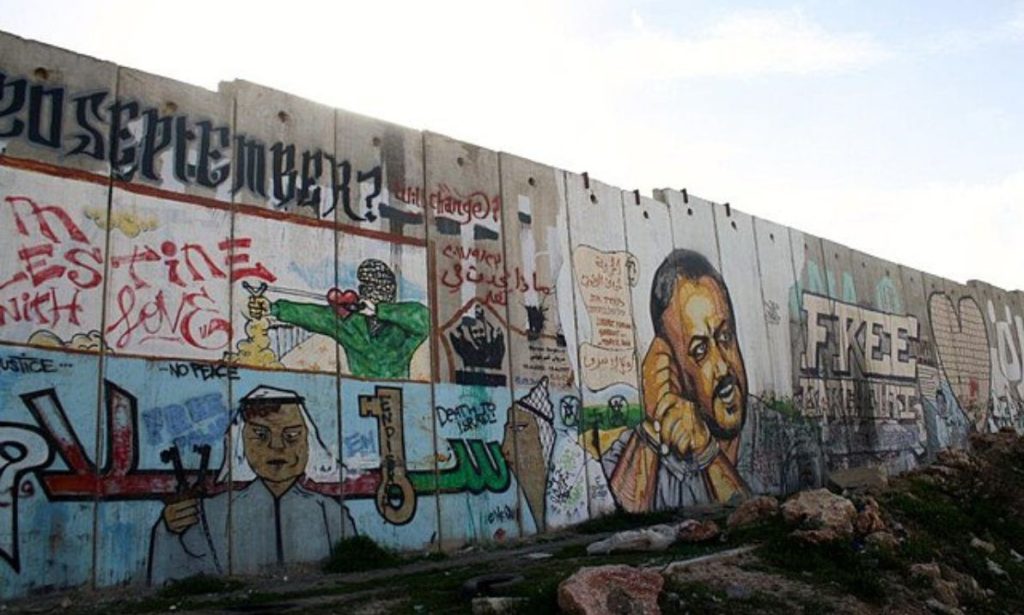Graffiti as a form of art that saw its beginnings ever since prehistoric humans used to carve on the walls, is recognized in the modern age as an anti-elitist art. For graffiti, art is not confined inside the walls of a gallery, a mansion, or a museum, inaccessible to a large portion of the public; rather it is an active agent in the streets and common areas where commuters, local residents, and tourists engage and interact with it. Globally, graffiti is often received positively as a sign of objection, resistance, and giving voice to the voiceless.
However, the positive nature of graffiti shifts when it is located on one of the world’s largest graffiti canvases, the Apartheid Wall of the West Bank in Palestine. It is not just a wall in a street, building, or subway; it is a barrier that is segregating between Palestinians, and Settler Israel, cutting through more than just land, and restricting Palestinians inside a land that was once wholly theirs.
From this point of departure, the ambivalent nature of graffiti art on the West Bank Wall poses itself. While artists come from all over the world to paint on it, oppressed Palestinians walk by it everyday, reminded by their loss. For the artists, it is a canvas, for Palestinians, it is an open wound.
Banksy: Armored Dove of Peace
Back in 2005, the Wall’s artistic potential was sparked by the anonymous British street artist Banksy who painted nine pieces on the grey concrete canvas, some of which got washed out. However, the reception of his artwork was not positive all the way. He recalls that during his first visit, an old Palestinian man told him the painting made the wall look beautiful, but “we don’t want it to be beautiful, we hate this wall. Go home.” The man continued.
This alone encapsulates the privileged position of foreign artists who write on the wall, and then leave it behind them, while Palestinians have to deal with it every day.
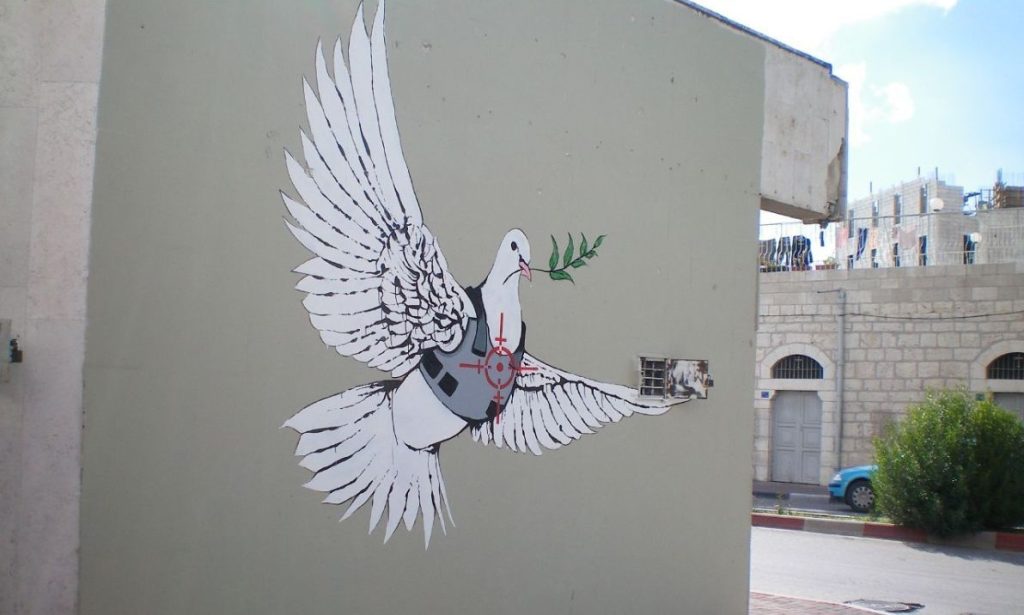
Majd Abdelhamid: Declaration of Independence
In 2007, Palestinian artist Majd Abdel Hamid spray painted a 14-long mural consisting of scrambled Arabic letters. The letters spell out the Palestinian Declaration of Independence 1998 which was written by the famous Palestinian poet Mahmoud Darwish. The location of this art piece is unlike Banksy’s- is seen by the locals more than the tourists. It acts as a message of hope for Palestinian locals.
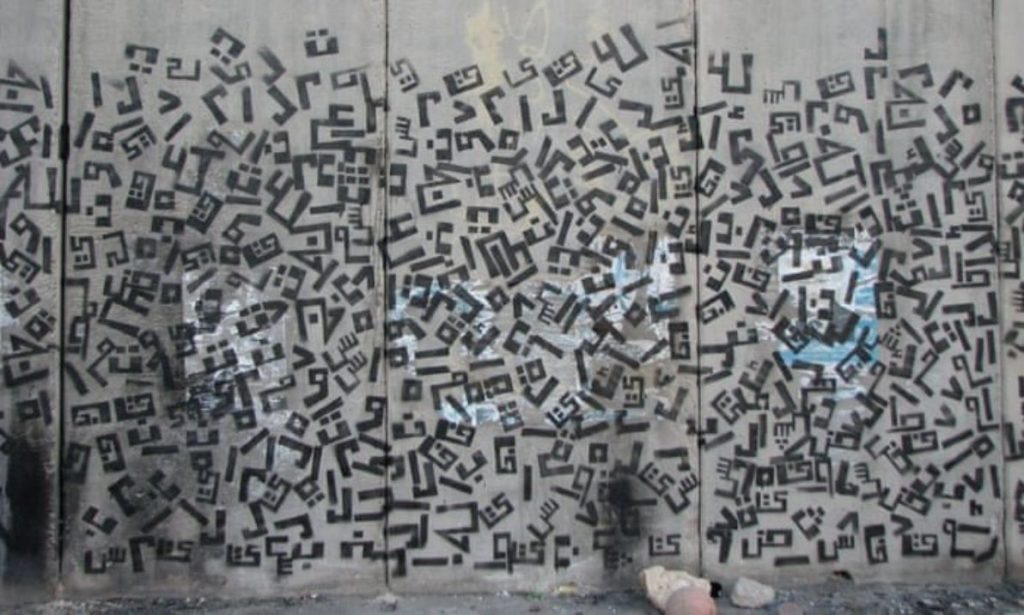

Mural of Leila Khaled
Leila Khaled is the first woman to hijack a plane. Palestinians see her as a hero of the Front Liberation of Palestine, while IDF sees her as a convicted terrorist. In 1969 she hijacked TWA Flight 840 which was on its way to Tel Aviv, from Rome, and later in 1970 Khaled, among other hijackers, took over Flight 219 to New York City. The photograph of her in a kaffiyeh holding an AK-47 rifle, taken by photojournalist Eddie Adams, became a symbol of the Palestinian resistance in the 1970s.
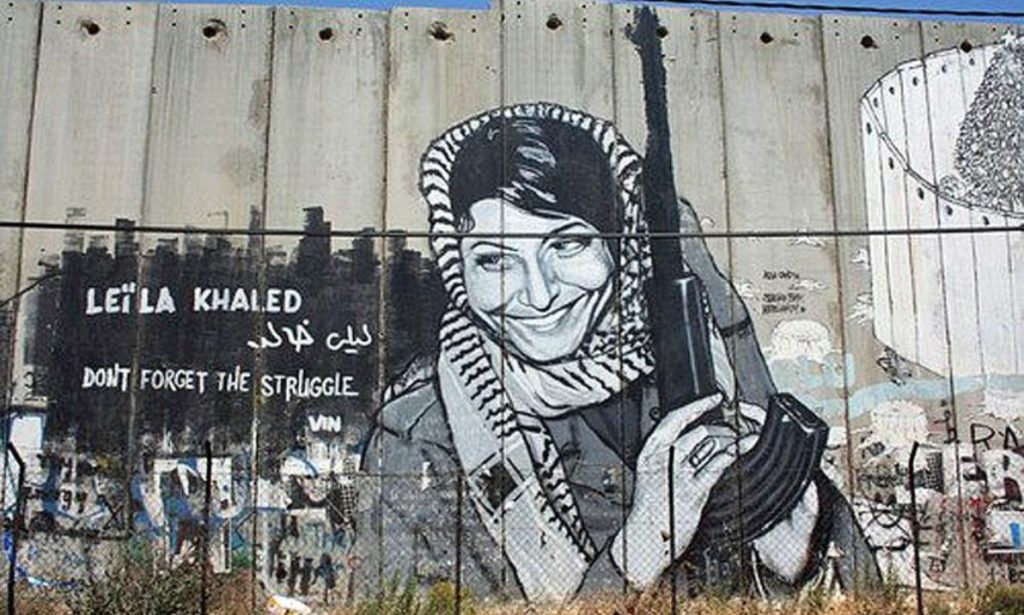

Ahed Tamimi Mural
The two artists who painted this Bethlehem mural were arrested in 2018, and banned from the country for 10 years. Ahed Tamimi, the young Palestinian activist who has been famous for standing up to Israeli soldiers ever since she was a child was imprisoned for eight months in 2018, after being charged with assaulting two Israelis soldiers in December 2017 after her cousin Mohamed was shot in the head by Israeli soldiers during a demonstration, he was only 15 years old.
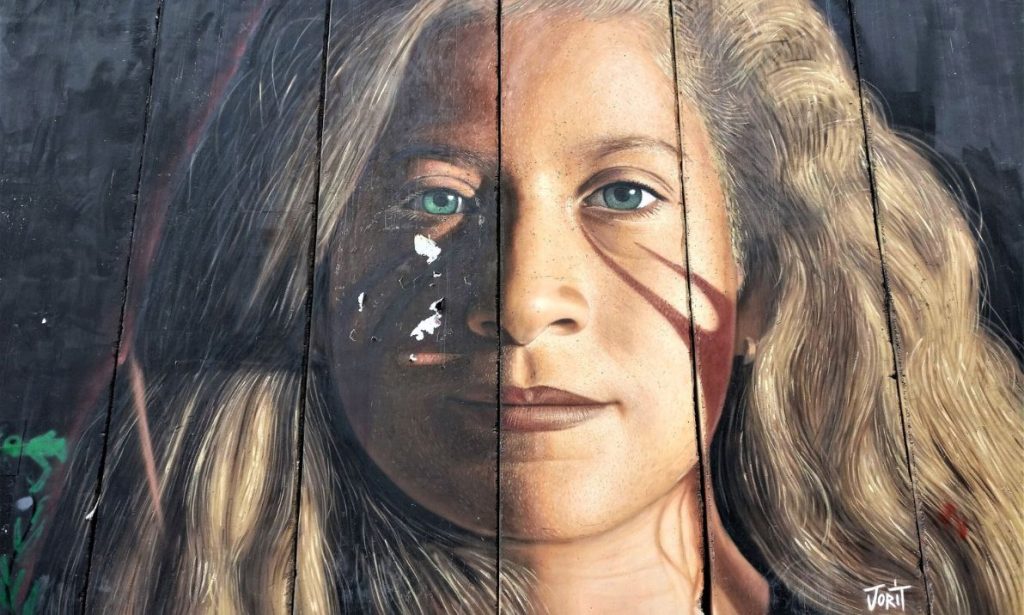

French revolution
This mural imitates the famous French painting ‘Liberty Leading the People’ by Eugene Delacroix. It is also similar to another famous photo of the Palestinian shirtless Palestinian fighter carrying the flag in one hand, and a slingshot in another. However, linking the French Revolution which symbolizes Western conceptualization of liberalism might be dangerous, on the grounds that the historical background of revolutionalism did in many indirect way eventually contribute to the displacement of Jewish people, and consequently occupation of Palestine.
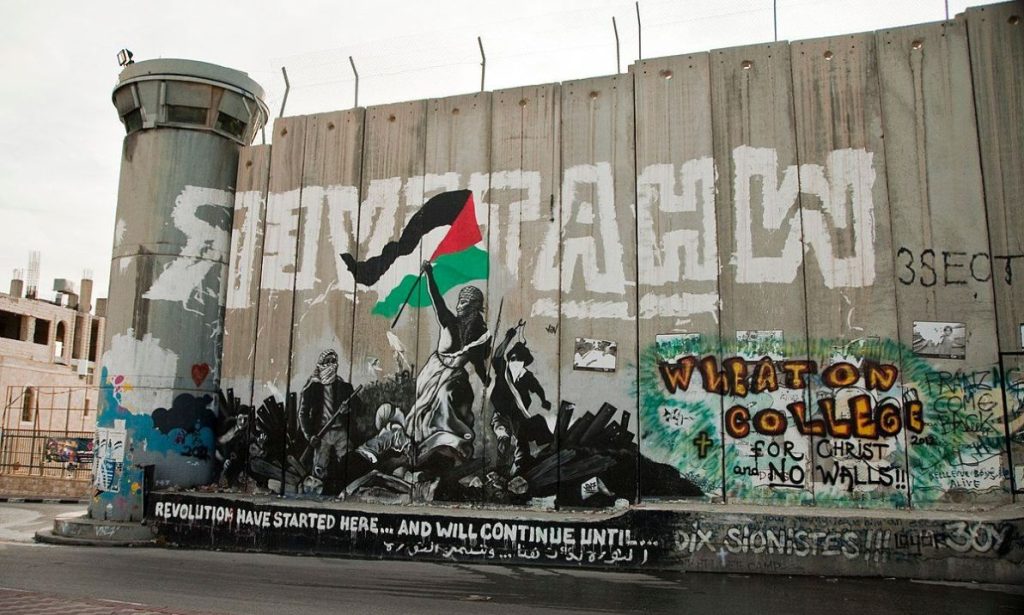

On the world’s most controversial canvas, spatial violence takes place. The West Bank apartheid wall is a both a physical and metaphorical divide. In a contested geopolitical region, graffiti art manifests itself on this metaphor, and words fall short of describing its multifaceted impact. The west bank stretches 708 kilometers, and constitutes 8 meters height of grey concrete, separating Palestinians from their farmlands, families, memories, and communities. Sometimes they see it as a reminder of an unresolved tumor, others find ways to make use of it or even ridicule it.
WE SAID THIS: Don’t Miss…Debunking Myths: A Few Things You Might Learn About Palestine From Al Da7ee7’s Episode


